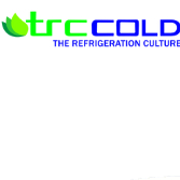The condensing unit typically consists of a compressor, condenser coil, fan, and controls. The compressor compresses the low-pressure refrigerant vapor, raising its temperature and pressure. The hot, high-pressure gas then flows through the condenser coil, where it releases heat to the surrounding environment and condenses into a liquid. The condenser fan helps dissipate this heat, allowing the refrigerant to return to a liquid state.
On the other hand, the evaporator is responsible for absorbing heat from the storage area, causing the refrigerant liquid to evaporate and thus cooling the space. It consists of coils through which the refrigerant flows, along with a fan to circulate air over the coils. As the war...
The condensing unit typically consists of a compressor, condenser coil, fan, and controls. The compressor compresses the low-pressure refrigerant vapor, raising its temperature and pressure. The hot, high-pressure gas then flows through the condenser coil, where it releases heat to the surrounding environment and condenses into a liquid. The condenser fan helps dissipate this heat, allowing the refrigerant to return to a liquid state.
On the other hand, the evaporator is responsible for absorbing heat from the storage area, causing the refrigerant liquid to evaporate and thus cooling the space. It consists of coils through which the refrigerant flows, along with a fan to circulate air over the coils. As the warm air from the storage area passes over the cold coils, heat is transferred to the refrigerant, Cold Room Condensing units and Evaporators causing it to evaporate and absorb the heat. The fan then circulates the cooled air back into the storage area, maintaining the desired temperature.
Together, the condensing unit and evaporator work in tandem to regulate the temperature of the cold storage space, ensuring that perishable goods are kept at the appropriate temperature to maintain their quality and safety. These components are vital for the efficient operation of cold storage facilities and are designed to withstand the demanding conditions of continuous use in low-temperature environments.
